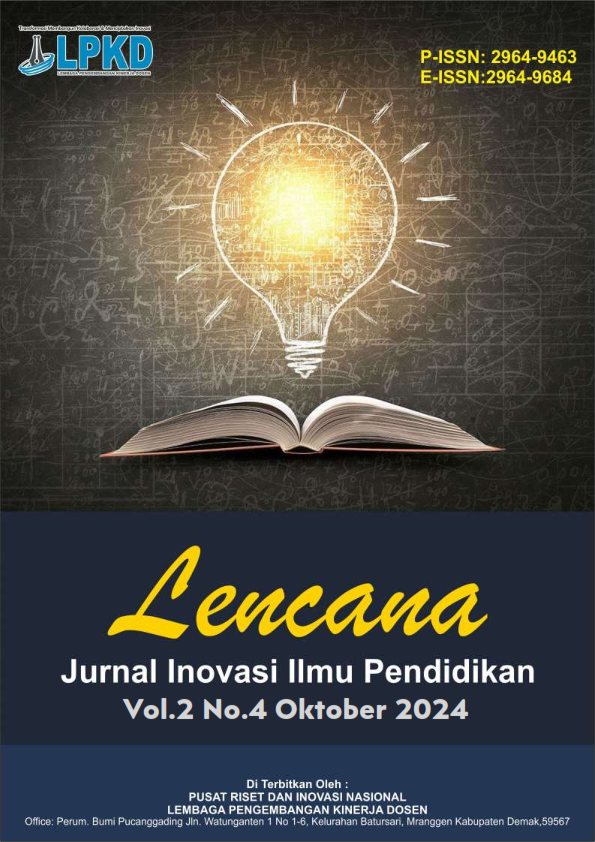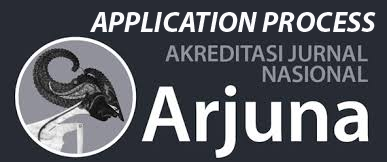Inovasi Mi Basah Menggunakan Tepung Mocaf Dengan Penambahan Puree Labu Kuning
DOI:
https://doi.org/10.55606/lencana.v2i4.4091Keywords:
Wet Noodles, Mocaf Flour, Yellow Pumpkin PureeAbstract
Wet noodles are raw noodles that are boiled in boiling water before being marketed. The making of noodles includes the stages of mixing, forming cutting sheets or printing and cooking. The average yellow noodles that are often sold in the market are dry noodles, wet noodles that are traded on average white noodles. In this report, the researcher wants to make an innovation of yellow wet noodles. The type of additional ingredient in wet noodles that functions to give a natural yellow color is yellow pumpkin. The nutritional content of yellow pumpkin is quite large, including rich in vitamins A & C, minerals, and carbohydrates, and the flesh of yellow pumpkin also contains antioxidants that are useful as anti-cancer. The addition of this yellow pumpkin will make wet noodles rich in β-carotene and can improve the color of processed products. This study used a pattern design of yellow pumpkin puree addition factor with 3 treatments, namely (30 grams), (40 grams) and (50 grams). Data collection was carried out by observation method through organoleptic quality tests assessed by 30 panelists. Data from organoleptic tests with single anova or one away anova test and Duncan's follow-up test. To determine the content of proximate (protein, water content, fat, carbohydrates, ash) and β-carotene, laboratory tests were carried out. The results of the study showed: 1) the best proportion of mocaf flour wet noodles with the addition of the best yellow pumpkin puree from the organoleptic test was obtained from a sample of 350 with the addition of 50 grams of yellow pumpkin puree, with the characteristics of a slightly straight shape; dark yellow color; the taste is quite like yellow pumpkin; the chewy texture and aroma are quite flavorful of yellow pumpkin. 2) The nutritional content of the best wet noodle results with 350 samples based on laboratory tests shows that per 100 grams has a B-carotene content of 86.50 mg; water content of 48.10%; protein 4.90%; fat 4.25%; carbohydrates 3.90%; ash content of 1.18%.
Downloads
References
Annur, C. M. (2023). Inilah negara pemakan mi instan terbanyak dunia, ada Indonesia? Databoks.com. Retrieved from https://databoks.katadata.co.id/infografik/2023/06/05/inilah-negara-pemakan-mi-instan-terbanyak-dunia-ada-indonesia#:~:text=Berdasarkan%20negaranya%2C%20Tiongkok%20masih%20menjadi%2Cinstan%20terbanyak%20dunia%20pada%202022.
Dewi, A. A. A. E. L., & Anak Agung Nanak Antarini, I. G. P. S. P. (2010). Pengaruh penambahan labu kuning (Cucurbita moschata) terhadap organoleptik, kapasitas antioksidan, nilai gizi mie basah. Jurnal Ilmu Gizi: Journal of Nutrition Science, 10(3), 128–135.
Ghifarie, S. A., & Rahmawati, F. (2022). Pemanfaatan puree labu kuning (Cucurbita moschata) pada produk vol au vent untuk meningkatkan konsumsi bahan pangan lokal di Indonesia. Prosiding Pendidikan Teknik Boga Busana, 17(1), 1–6. https://journal.uny.ac.id/index.php/ptbb/article/view/59329
Gusriani, I., Koto, H., & Dany, Y. (2021). Aplikasi pemanfaatan tepung mocaf (modified cassava flour) pada beberapa produk pangan di Madrasah Aliyah Mambaul Ulum Kabupaten Bengkulu Tengah. Jurnal Inovasi Pengabdian Masyarakat Pendidikan, 2(1), 57–73. https://doi.org/10.33369/jurnalinovasi.v2i1.19142
Hasni, D., Nilda, C., & Amalia, J. R. (2022). Kajian pembuatan mie basah tinggi serat dengan substitusi tepung porang dan pewarna alami. Jurnal Teknologi & Industri Hasil Pertanian, 27(1), 31–41.
Listyawati, F. D., & Widyastuti, S. (2019). Karakteristik mie merah gluten free dari tepung gadung (Dioscorea hispida Dennst) dan tepung moca dengan penambahan gliserol. Jurnal Teknologi dan Industri Pangan, 3(2). https://doi.org/10.33061/jitipari.v3i2.2696
Putri, N. A., Herlina, H., & Subagio, A. (2018). Karakteristik moca (modified cassava flour) berdasarkan metode penggilingan dan lama fermentasi. Jurnal Agroteknologi, 12(01), 79. https://doi.org/10.19184/j-agt.v12i1.8252
Risti, Y., & Rahayuni, A. (2013). Pengaruh penambahan telur terhadap kadar protein, serat, tingkat kekenyalan dan penerimaan mie basah bebas gluten berbahan baku tepung komposit (tepung komposit: tepung mocaf, tapioka, dan maizena). Journal of Nutrition College, 2(4), 696–703. https://doi.org/10.14710/jnc.v2i4.3833
Santoso, R., Ziska, R., & Hidayat, A. (2023). Formulasi & evaluasi mie gluten-free ekstrusi dengan kemasan biodegradable menggunakan tepung porang, mocaf, garut. IKRA-ITH Teknologi: Jurnal Sains dan Teknologi, 7(3), 76–84. https://doi.org/10.37817/ikraith-teknologi.v7i3.3236
Sudiarta, N. P. (2022). Kualitas mie basah dengan penambahan tepung ubi talas. Jurnal Gastronomi Indonesia, 10(2), 78–86. https://doi.org/10.52352/jgi.v10i2.919
Umri, A. W., Studi, P., Pangan, T., & Semarang, U. M. (2015). Sifat organoleptik mie basah dengan substitusi. Jurnal Pangan dan Gizi, 7(1), 38–47.
Wulandari, G., Hodijah, S., & Amzar, Y. V. (2019). Impor gandum Indonesia dan faktor-faktor yang mempengaruhinya. Jurnal Ekonomi Indonesia, 7(2), 101–112.
Downloads
Published
How to Cite
Issue
Section
License
Copyright (c) 2024 Lencana: Jurnal Inovasi Ilmu Pendidikan

This work is licensed under a Creative Commons Attribution-ShareAlike 4.0 International License.








